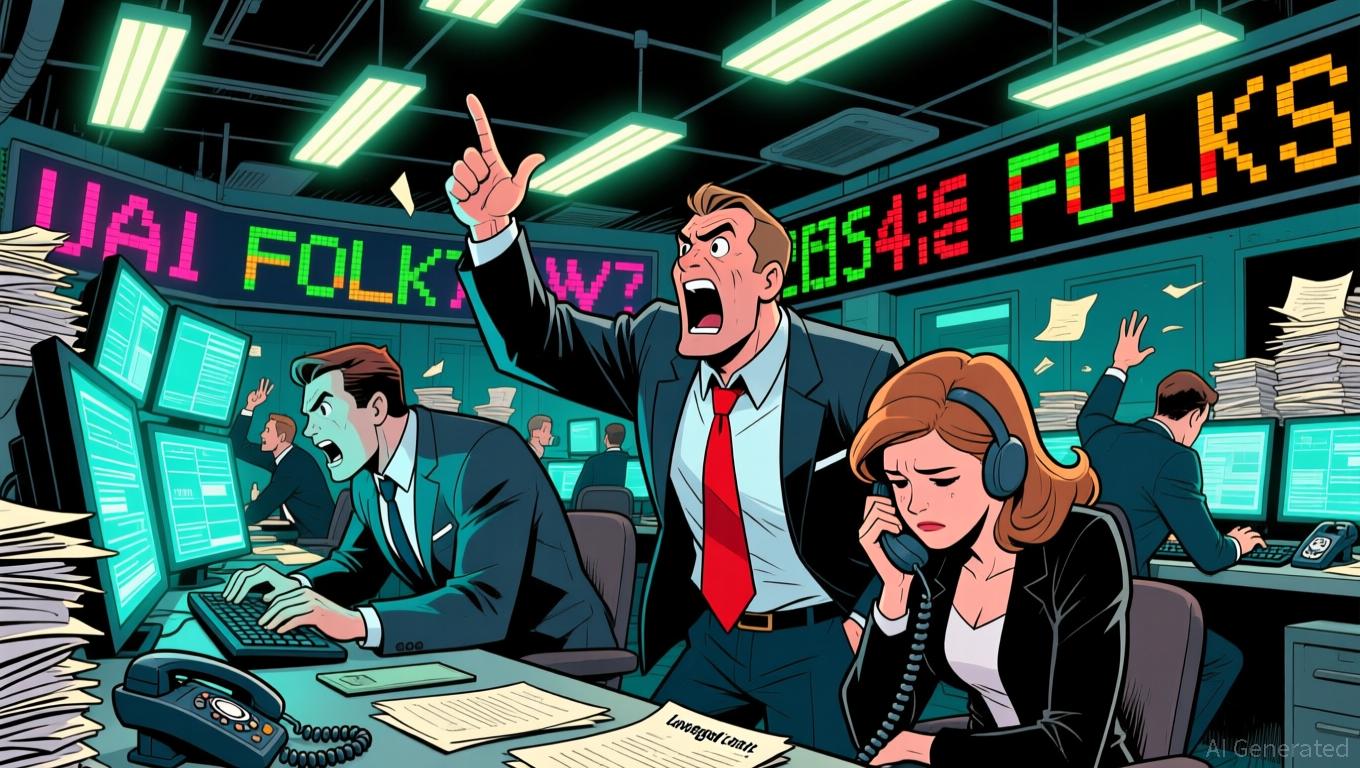YouTube’s ‘Gambling’ Update Sparks Crypto Fears — Here’s What’s Actually Changing
YouTube’s updated gambling policy, effective November 17, 2025, alarmed NFT and Web3 creators over potential content bans. The platform later clarified that videos showcasing digital assets are still allowed, provided they don’t promote casino-style gambling or financial returns. Enforcement will focus on gambling-related misuse of digital goods.
YouTube’s revised gambling policy, effective November 17, 2025, initially raised concerns that NFT and Web3 gaming content might be classified as gambling violations.
This policy update is in response to growing advertiser concerns about gambling-related content and addresses the evolving value of digital goods. While Web3 creators remain wary of potential impacts on monetized content, YouTube aims to balance regulation with creator freedom.
YouTube Policy Update Sparks Crypto Creator Concerns
On October 28, 2025, YouTube announced major updates to its Community Guidelines to enhance its management of online gambling and graphic violence in gaming.
The new policy bars content that directs viewers to uncertified gambling sites or applications. Importantly, it now includes gambling involving digital goods, such as video game skins, cosmetics, and non-fungible tokens (NFTs).
This announcement quickly generated concern among NFT and Web3 gaming creators. Many worried that the updated guidelines would ban content showcasing blockchain-based digital assets, which play a crucial role in the gaming NFT market.
Research shows that gaming NFTs reached a $4.8 billion valuation in 2024, with expected annual growth of 24.8% through 2034.
Creator LeevaiNFT voiced frustration on X (Twitter), describing the policy as harmful to Web3 gaming and Counter-Strike skins. His post captured the sentiment among creators who rely on YouTube to share and discover NFT content.
“YouTube’s new policy is a direct attack on Web3 gaming and CS skins. Starting November 17, any videos promoting NFTs, crypto tokens, or in-game skins with real value get hit as gambling violations. The end of an era… I discovered NFTs through YT,” Leevai lamented.
The main issue for creators is how YouTube will distinguish between “promoting” digital goods and simply displaying them in content.
The uncertainty over enforcement has introduced new risks for those who rely on crypto and Web3 gaming videos for monetization.
YouTube Clarifies Boundaries for NFT and Gaming Content
After receiving feedback, a YouTube spokesperson clarified to the media that:
- Showing video game skins or NFTs is still permitted under the new rules.
- The critical factor is whether content promotes casino-style gambling or promises financial returns.
- Educational videos, gameplay showcases, or discussions on blockchain technology that do not guide users to gambling platforms are outside the policy’s reach.
- YouTube will place age restrictions on social casino-style content, even if no real value is exchanged.
- Videos uploaded before November 17, 2025, that breach the new guidelines may be removed or age-restricted, but affected accounts will not receive strikes.
- Creators have been encouraged to use YouTube’s editing tools to ensure compliance before the deadline.
YouTube’s targeted enforcement focuses on content that encourages gambling using digital goods with real-world value, such as third-party sites where skins or NFTs are wagered in casino-like games.
The UK government’s September 2025 review on skins gambling supported regulatory oversight for in-game items with tradable, real-world value.
Meanwhile, Google’s system separately allows certified gambling operators to advertise under region-specific requirements. This creates additional complexity, and some creators argue that legitimate gambling advertisers are favored while independent creators encounter stricter controls.
Advertiser Pressure and the Future of Web3 Content
Several users have linked the update to advertiser demands, rather than a targeted move against crypto. One user on X reasoned that disabling monetization could resolve issues. This comes as large advertisers object to their ads running alongside gambling-related videos.
“Just disable monetization and you’re good. This is mostly because big advertisers complained about their ads being shown on gambling-related content,” a crypto YouTuber remarked.
This perspective matches broader industry trends. Platforms now face increased pressure to ensure brand safety, especially around content that deals with unregulated or high-risk financial activity.
However, creators who consistently produce high-quality Web3 and gaming content see the policy as significant for their monetization strategies.
LeevaiNFT recognized the influence of advertisers but questioned the fairness toward creators who produce legitimate content. He also scrutinized whether YouTube monetization is worth the additional regulatory challenges, especially when platforms like TikTok might offer more flexibility.
Still not fair to people like you that produce a lot of quality content about crypto and web3 gaming consistently.YouTube monetization is not that bad right?
— Leevai (@LeevaiNFT) October 31, 2025
As the November 17, 2025, enforcement date approaches, Web3 creators must decide whether to adapt their content, try other platforms like TikTok, or risk losing monetization.
While creators have some guidance, uncertainty around enforcement continues to present challenges for the community.
Disclaimer: The content of this article solely reflects the author's opinion and does not represent the platform in any capacity. This article is not intended to serve as a reference for making investment decisions.
You may also like
XRP News Today: BlackRock's Investment in XRP Encounters Regulatory Hurdles While Trillions Remain on Hold
- BlackRock's Maxwell Stein highlighted XRP Ledger's role in tokenizing $trillions of real-world assets, partnering with Securitize to boost blockchain infrastructure. - Ripple's $500M funding at $40B valuation and XRP's ISO 20022 compliance intensify ETF speculation amid regulatory uncertainty over SEC's stance. - BlackRock faces scrutiny after a $500M fraud scandal at HPS, raising doubts about its crypto credibility despite XRP's Mastercard/WebBank integrations. - Industry splits on XRP's potential: Blac

Bitcoin Plummets Unexpectedly: Has It Hit the Floor or Is a Larger Downturn Ahead?
- Bitcoin fell 15% in August 2025 amid Fed policy shifts, China's crypto ban, and ETF outflows, testing its macro asset status. - The Fed's delayed rate cuts and inflation ambiguity created market uncertainty, while China's ownership ban disrupted liquidity and global demand. - On-chain data shows 375,000 BTC accumulation and a 1.8 MVRV ratio, suggesting structural resilience despite regulatory shocks. - ETF outflows ($291M total) reflect investor caution over inflation risks and regulatory gaps, but could

Bitget Connects Web2 and Web3 by Offering Zero-Fee Trades and Up to 50x Leverage on AI-DeFi Trading Pairs
- Bitget launched 50x-leveraged USDT-margined perpetual contracts for UAI and FOLKS, alongside automated trading bots to boost algorithmic accessibility. - The zero-fee U.S. stock token campaign and Kite (KITE) listing aim to bridge Web2/Web3 by integrating traditional assets with blockchain infrastructure. - With 120M+ users, Bitget's UEX model combines centralized efficiency with tokenized finance, targeting AI/DeFi growth through macroeconomic and onchain exposure.

Bitcoin News Update: Block's Revenue Falls Short Despite Positive Outlook
- Block's Q3 earnings and revenue missed estimates, causing a 12% post-market stock drop. - Square's GPV grew 12% YoY, and Cash App's gross profit per user rose 25% to $94.16. - The company raised 2025 gross profit guidance to $10.24B but faces margin durability concerns. - Bitcoin initiatives, including $2B in Q3 revenue, face regulatory scrutiny and market volatility. - Analysts highlight weak profit flow-through and intensifying peer-to-peer payment competition.
